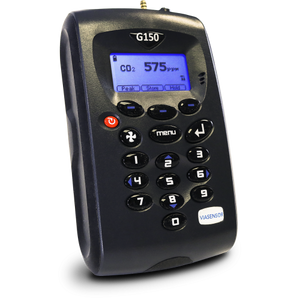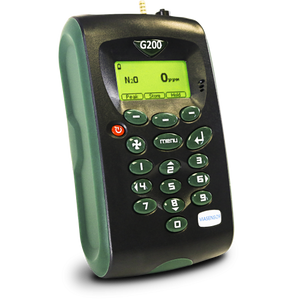News
Hydrophobia in Gas Analyzers (Condensate Considerations When Measuring Gas)

Regular and accurate gas analysis readings are a vital component of more industries than you may realize. Landfills, hospitals, universities, farms and research centers are just some of the places you are likely to see state-of-the-art gas analysis technology able to measure particulate concentration down to the parts per billion. That level of sensitivity mandates having an uncontaminated sample, with water being by far the worst and most frequent threat.
Any gas analyzer worth its money will have some protection against this. Seen below is the Condensate Trap Tube of an MRU Optimax which occupies almost the entire left side of the analyzer:

Many analyzers will have multiple layers of protection from becoming waterlogged. You can clearly see the pleated filter above on the left side of the tube, meant to absorb any stray moisture which somehow makes it that far.
Most analyzers will also have consumable filters which can be connected to external sampling tubes. These are designed to absorb incoming moisture just like the pleated filter. Seen below is a PTFE filter designed for use with the Viasensor G series of instruments.

Because preventing moisture from entering analyzers is one of the most important considerations whenever using one, making liberal use of your unit's protection measures strongly encouraged. Allowing any amount of water into most devices will likely lead to incorrect readings but high enough exposure will damage or even completely disable your unit.
PTFE filters, like the one shown above, are designed to be highly hydrophobic. However, they should be replaced with regularity. Like any type of filter, they can be rendered ineffective with enough use. Unfortunately, 'how much use?' is not an easy answer. Refer to your device's instruction manual or other literature for baseline recommendations.
Climate is the biggest factor affecting the lifetime of any given moisture filter. While facilities in dryer areas should be able to get the full recommended life out of their water protection measures, units used in more humid and tropical climates could wind up having to replace filters several times as often. Any controlled climate conditions on site should also be taken into account.
Another major consideration is the source of the gas being analyzed, be it an incubator, wellhead, open air or other source. Leachate gas, for example, is likely to contain considerable amounts of moisture and will necessitate careful monitoring of any moisture filters.
Because of the potential damage condensation can do to many analyzers, in many cases the old adage of "better safe than sorry" may want to be followed if it is not known how much use a particular filter has seen or how long it has been inside the analyzer. As such, it is always a smart idea to stock spares of whatever you can to ensure regular reading are uninterrupted.
Condensate damage represents probably the biggest threat to your unit but with consideration, care, and yearly calibrations, your unit may last an entire career.
For more information, visit DiamondSci.com


